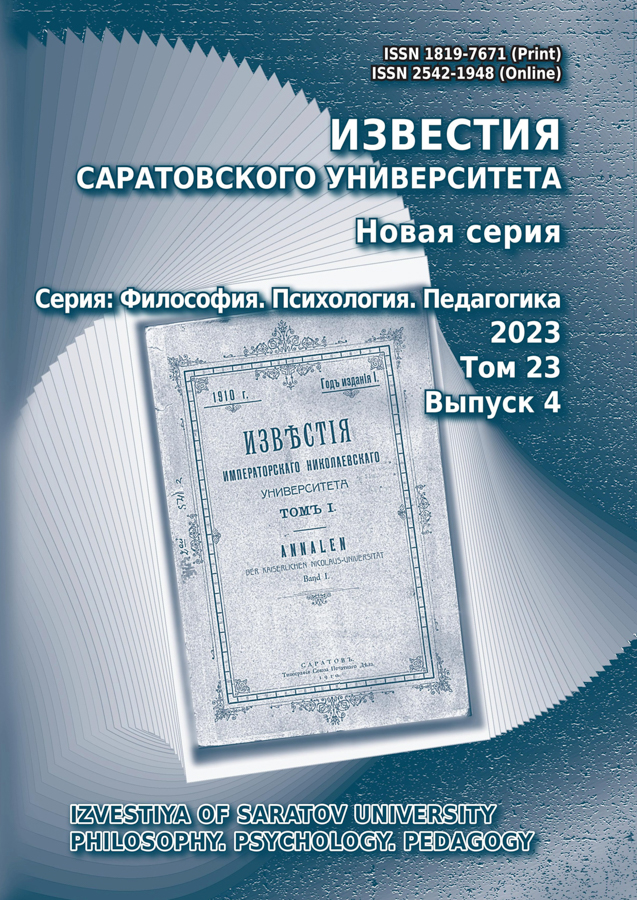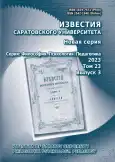The purpose of non-classical art as a philosophical problem (based on the philosophy of V. S. Solovyov, S. N. Bulgakov and N. A. Berdyaev)
- Authors: Shchekaleva O.V.1
-
Affiliations:
- Moscow State University named after M.V. Lomonosov
- Issue: Vol 23, No 3 (2023)
- Pages: 298-302
- Section: Articles
- URL: https://journals.rcsi.science/1819-7671/article/view/250992
- DOI: https://doi.org/10.18500/1819-7671-2023-23-3-298-302
- EDN: https://elibrary.ru/YJAXFY
- ID: 250992
Cite item
Full Text
Abstract
Keywords
About the authors
Olga Vadimovna Shchekaleva
Moscow State University named after M.V. Lomonosov119991, Russian Federation, Moscow, Lenin Hills microdistrict, 1.
References
- Соловьев В. С. Философия искусства и литературная критика. М. : Искусство, 1991. 702 с.
- Платон. Государство. М. : Академический проект, 2015. 398 с.
- Соловьев В. С. Общий смысл искусства // Соловьев В. С. Смысл любви : Избранные произведения. М. : Современник, 1991. С. 69–85
- Булгаков С. Н. Свет невечерний. Созерцания и умозрения. М. : Республика, 1994. 412 с.
- Булгаков С. Н. Тихие думы. М. : Республика, 1996. 509 с.
- Манойлович А. Оживающая керамика: мастер динамики и сюрреализма Джонсон Цанг // Альманах Artifex. 2016. № 12. URL: https://artifex.ru/скульптура/оживающая-керамика-джонсон-цанг/ (дата обращения: 05.10.2022).
- Бердяев Н. А. Философия творчества, культуры и искусства: в 2 т. Т. 1. М. : Искусство, ИЧП «Лига», 1994. 541 с.
- Бердяев Н. А. Философия свободы. Смысл творчества. М. : Правда, 1989. 608 с.
- Панфилова М. И. Ренессанс и его смыслы в философии Н. А. Бердяева // Научно-технические ведомости СПбГПУ. Гуманитарные и общественные науки. 2015. № 4 (232). С. 99–108.
- Бердяев Н. А. Пикассо // София. 1914. № 3. С. 30–45.
- Бердяев Н. А. О назначении человека. Опыт парадоксальной этики. М. : Республика, 1993. 383 с.
- Евлампиев И. И. История русской метафизики в XIX–XX веках. Русская философия в поисках Абсолюта. СПб. : Издательство Российской христианской гуманитарной академии, 2020. 920 с.
- Бердяев Н. А. Война и эсхатология // Путь. № 61 (октябрь 1939 – март 1940). С. 3–14.
- Бердяев Н. А. Sub specie aeternitatis. Опыты философские, социальные и литературные (1900–1906 гг.). М. : Канон+; Реабилитация, 2002. 655 с.
- Бердяев Н. А. Астральный роман // Типы религиозной мысли в России. Собрание сочинений : в 3 т. Т. 3. Париж : YMCA-Press, 1989. С. 430–440.
- Бердяев Н. А. Духовный кризис интеллигенции. СПб. : Тип. Товарищества «Общественная польза», 1910. 314 с.
Supplementary files










